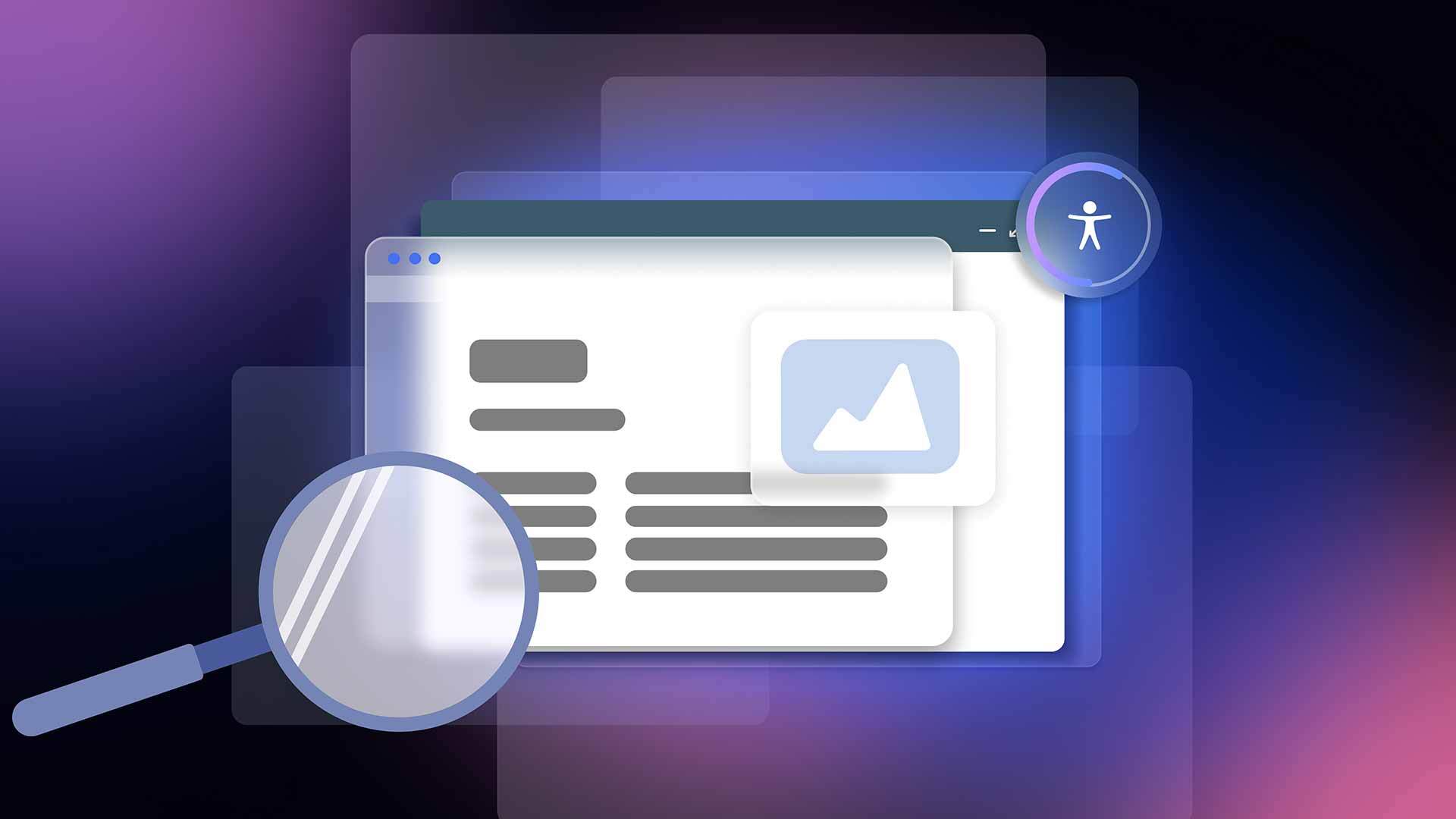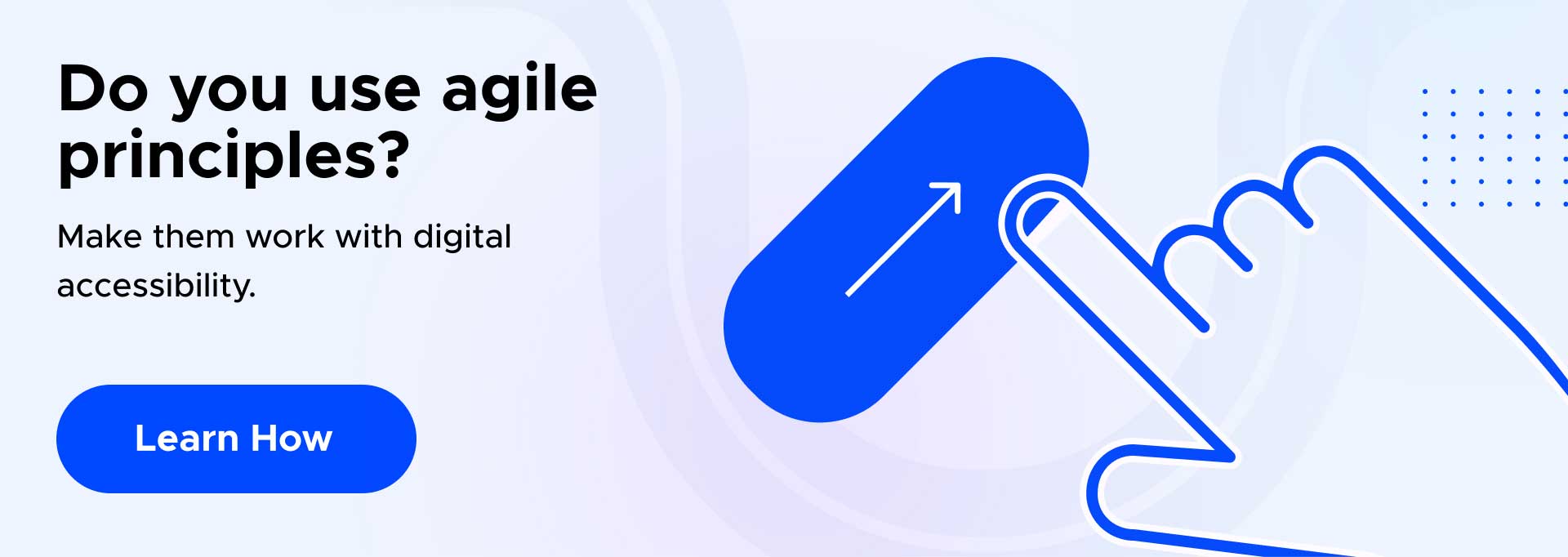Agile Principles & Their Crucial Role in Advancing Accessibility

With technology becoming an integral part of daily life, digital accessibility is no longer a luxury but a necessity. That said, Agile principles are a robust software development method that can be pivotal in supporting inclusivity. In this blog, we explore how these principles contribute to accessible content for everyone, including people with disabilities.
We start with a better understanding of Agile methodology.
A Brief Overview of the Agile Approach
Agile is a project management and software development approach emphasizing collaboration, flexibility, and customer service. Founded on 12 principles outlined in the Agile Manifesto, it values individuals and interactions, working solutions, and customer collaboration over processes and tools. Among the fundamental principles are:
- Customer Satisfaction Through Continuous Delivery: Agile prioritizes delivering valuable software to customers frequently, allowing for the prompt incorporation of feedback.
- Regular Delivery of Working Software: Agile promotes incremental development, with functional software delivered regularly.
- Sustainable Development Pace: Agile teams maintain a consistent, sustainable pace to ensure the quality of the work.
- Continuous Attention to Excellence: Never sacrificing quality for speed, Agile delivers well-designed, maintainable, and robust software.
- Overall Simplicity: Agile favors straightforward solutions and encourages teams to minimize waste.
Now, let’s learn how Agile principles relate to digital accessibility.
Agile and Digital Accessibility: Six Key Principles
Digital accessibility means making online content and services accessible to people of different abilities, ensuring they can perceive, understand, navigate, and interact with digital content effectively. By applying the six Agile principles below, organizations can address digital accessibility more effectively and efficiently.
1. Customer-Centric Approach
Agile’s first principle, which emphasizes customer satisfaction through continuous delivery, aligns perfectly with digital accessibility. Accessibility is about making digital content usable for everyone, and by delivering incremental updates with accessibility improvements, organizations can directly address their users’ needs. Continuous delivery allows for quick iterations, making it easier to incorporate user feedback and accessibility enhancements as you go.
2. Flexible Requirement Changes
Digital accessibility is an ever-evolving field. New technologies, guidelines, and user needs constantly emerge. That’s why Agile’s second principle is crucial. It allows organizations to adapt quickly to changing accessibility standards and regulations, ensuring their digital properties stay consistently accessible.
3. Collaboration Between Developers & Stakeholders
By involving accessibility experts, users with disabilities, and business stakeholders in the development process, organizations can ensure that accessibility is a shared goal and not a mere checkbox item. This collaborative approach helps create a company culture of accessibility.
4. Sustainable Development Pace
Agile’s fifth principle is vital to addressing accessibility effectively. Rushed development can lead to accessibility oversights. By setting a sustainable pace, organizations can allocate sufficient time for accessibility testing, audits, and improvements that optimize results.
5. Continuous Attention to Technical Excellence and Good Design
Creating accessible digital content involves fine-tuning code, adhering to web standards, and following best practices. Agile’s emphasis on quality supports these efforts, resulting in greater accessibility.
6. Overall Simplicity
Complex and cluttered interfaces can be challenging for disabled users. By promoting simplicity, Agile helps create more straightforward and user-friendly digital content, which is inherently more accessible.
The Two Main Frameworks for Agile Accessibility
Scrum and Kanban are two of the most popular Agile methods, and both are adaptable to support digital accessibility. See a brief description of these methods below:
- Scrum: known for its iterative development cycles, focusing on short, fixed-length iterations called sprints. Scrum teams can include accessibility tasks in their sprint backlogs, ensuring regular accessibility improvements. By conducting accessibility testing as part of the Definition of Done for user stories, accessibility becomes ingrained in the development process.
- Kanban: emphasizes visualizing and managing work in progress. Organizations can use Kanban boards to prioritize and continually address accessibility tasks. The Kanban approach allows flexibility in managing accessibility efforts, making it easier to adapt to changing requirements and user needs.
Agile Principles and the Bigger Accessibility Picture
Agile principles offer a valuable framework for advancing digital accessibility in an era where web inclusion isn’t just a moral obligation but also a legal requirement. It helps ensure organizations can deliver digital products that are usable and enjoyable for all users while remaining adaptable to evolving accessibility standards and regulations.
To create a truly inclusive digital world, organizations should embrace Agile principles and integrate accessibility into their development processes from the very beginning. This proactive approach helps companies meet related legal requirements while contributing to a more equitable and accessible digital landscape for all.
See how UserWay is a natural support system for Agile and all your accessibility and compliance needs.
UserWay and Agile Go Hand-In-Hand
Agile aligns with digital accessibility, and that’s UserWay’s guiding principle. Our AI-Powered accessibility tools, legal support systems, and commission-based partnerships can put you on track to accessibility and compliance. And we’re with you every step of the way on your journey.
Start your UserWay journey today.
Answers to Common FAQS
What’s The Short Description of Agile Methodology?
Agile emphasizes cross-departmental collaboration and ongoing enhancements. It parses projects into smaller cycles and guides dev teams through planning, execution, and evaluation.
How Does Agile Apply to Accessibility?
Agile encourages teams to prioritize the design, development, and delivery of accessible websites, apps, and platforms. It also continuously upgrades these efforts at every development stage.
What’s One Major Disadvantage of Agile Methodology?
Staggered output can be a problem. Iterative project delivery may expedite products into the market, but it can disrupt teams organizationally. When teams work on each component in different cycles, the complete output becomes fragmented rather than cohesive.





Share